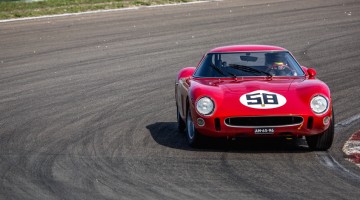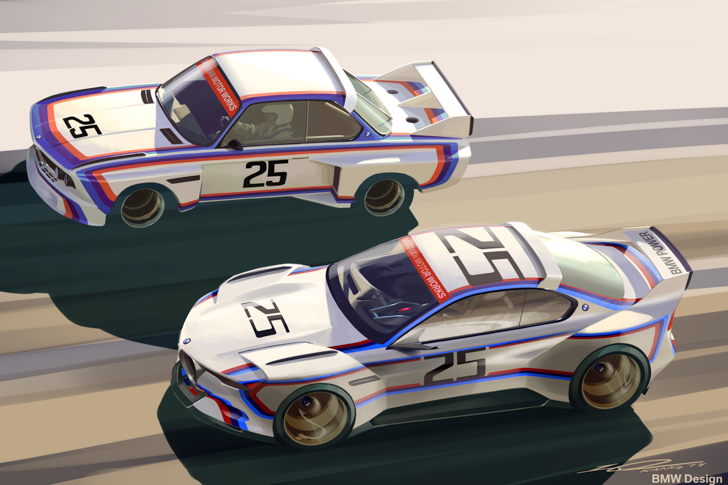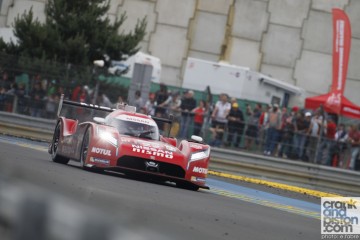Another year, another selection of historic touring car, GT and single seater action tearing around Brands Hatch. Our man gets the lowdown from some of the most iconic models…
[Not a valid template]Recently the Brands Hatch GP circuit played host to the annual Historic Sports Car Club’s Superprix for the 26th time. It might seem like a familiar formula (especially for those who have followed our previous coverage of classic events at Brands Hatch), but despite the well-established series’ and drivers returning, there are always new faces, cars and even a brand new ‘old’ series to keep an eye out for.
[Not a valid template]The latter comment refers to the Jaguar Heritage Challenge. It’s a venture dreamt up by both the HSCC and Jaguar Heritage, a division of the famous marque that is dedicated to preserving its history and with which crankandpiston.com has spent some time on the Mille Miglia. The grid is open to Jaguar sports and touring cars built before 1966, from XK120s to Mk.IIs, via C,D and E-Types. The breadth of eligible machinery has led to a large number of entrants, most notably Jaguar hero Andy Wallace, winner of the 1988 Le Mans 24 Hours in the Silk Cut XJR-9LM.
As if the sight of 27 ‘big cats’ roaming the GP loop weren’t impressive enough, there were a number of other automotive icons that caught our attention, all of them iconic in their own way, and very much deserving a closer look.
[Not a valid template]First up is the stunning Ferrari Dino 246 of Tony Smith, a regular in the Historic Grand Prix Cars Association series. It may not be the Dino 246 you’re thinking of though: confusingly, the Dino 246 nameplate was not only used for the pretty V6 road car from the late sixties, but had previously adorned a sports-racer from the late fifties (albeit with the suffix S), and the Formula 1 car from 1960. This very special car is the latter, and I do mean THE latter; it is the only surviving one of its type.
As if that wasn’t enough to make it special, it also represents the end of an era for the beloved marque’s Formula 1 cars. This very machine represents Ferrari’s swansong for its iconic 1950s ‘racing car shape’, giving Enzo the final Grand Prix win for a front-engined prancing horse, at Monza in 1960 in the hands of Phil Hill.
[Not a valid template]From the refined, thorough-bred prancing horse to the original pony car, the 1965 Ford Mustang. This particular model was brought along by Peter Hallford for the Historic Touring Car Championship. This ‘Stang isn’t particularly unusual, but the vivid mustard-yellow paintwork instantly demanded a second look, which revealed NASCAR-esque door numbers and matte black Torq Thrust style rims. Everything about this slice of Americana just looked so right. Even the California plates.
[Not a valid template]
Back to single-seaters, the weekend having boasted eight grids of open-wheel action, from 1100cc Formula Juniors right up to the Derek Bell Trophy featuring Formula 5000 and Formula Atlantic cars. The coolest looking Formula cars were a pair of BMW-engined March 782s in the Historic F2 races though. While the shape of the 782 isn’t instantly recognisable, the ‘M’ liveries they were sporting (as they did in period for the Polifac BMW Junior Team) definitely qualify as iconic. The tricolour on white scheme very much suits the wide, low proportion and blunt surfaces of the 70’s bodywork.
The Pre-’80 Endurance Challenge, the longest race of the weekend at 60 minutes with a driver change, gave up a couple more gems that fit the iconic theme. The series is a tribute to sports-racing, GT and Touring cars that competed internationally in the ‘70s, and although the open cockpit Lolas and Chevrons dominated the grid (and time-sheets), a handful of GT cars were also fighting for a class win.
[Not a valid template]Two of those GT cars were especially appealing. First was the Porsche Carrera RSR 3.0 of Hans Huebner. The massively extended arches and huge whale-tail spoiler almost caricaturize the 911 (itself possibly the most iconic form sheet metal has ever taken), reminding us where today’s popular RWB creations have taken their inspiration from. The red and blue Valvoline stripes and wedged ride-height place the RSR firmly back in the 70s though.
[Not a valid template]The other head-turning entry in the Pre-’80 Endurance Challenge was the BMW CSL ‘Batmobile’, driven by Sam Thomas and pro-driver Ollie Hancock. Already an iconic shape (as evidenced by its brand new namesake), the striking Alexander Calder ‘Art Car’ livery just made it impossible to ignore. The 3-litre straight six sounded purposeful and full-bodied, and it obviously had the performance to match as it took the win in the GT1 class.
–
A familiar formula the Historic Sports Car Club’s Superprix may be, but every year it continues to surprise us.



